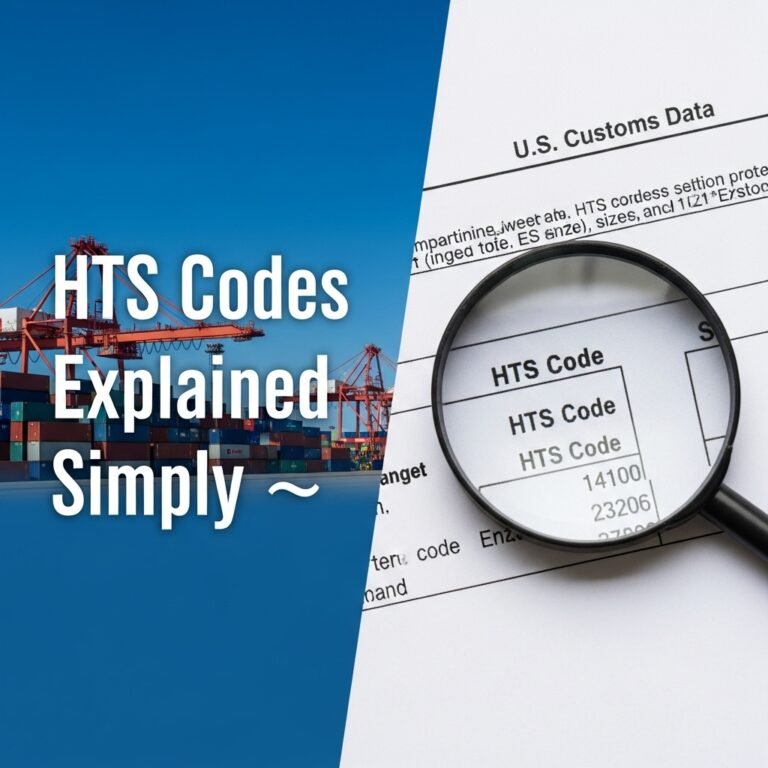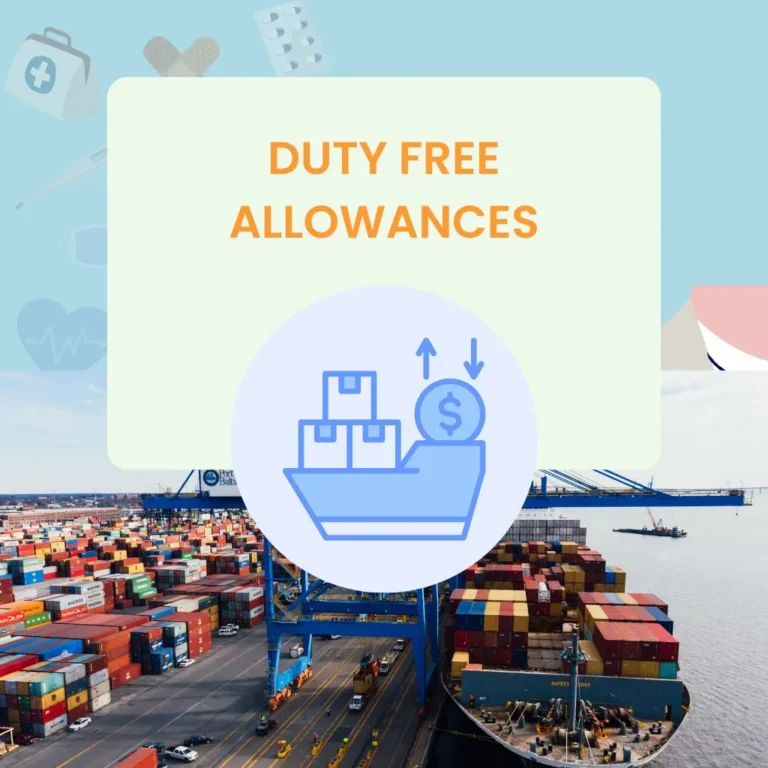How to Calculate Import Duty – Step by Step
Whether you are a small business importing goods regularly or an individual ordering products online from abroad, understanding how to calculate import duty is essential. Without this knowledge, you could face unexpected costs, delayed shipments, or compliance issues with customs.
In this guide, we’ll break down the entire process into simple, actionable steps. You’ll also learn about important concepts like HS codes, CIF value, VAT, and trade agreements — all explained in plain English with real examples.
Table Of Content
1. What is Import Duty?
Import duty is a type of tax imposed by a government on goods brought into a country from abroad. The rate and calculation method vary depending on the product type, value, country of origin, and applicable trade agreements.
Import duties serve multiple purposes:
- Protect Local Industries: By increasing the cost of imported goods, domestic industries become more competitive.
- Generate Revenue: Governments rely on import duties as a significant source of income.
- Regulate Trade: Duties can be adjusted to encourage or discourage trade with specific countries.
For importers, understanding duty is not just about compliance; it directly affects pricing, profit margins, and customer satisfaction.
2. Key Terms You Must Know
Before diving into calculations, familiarize yourself with these essential terms:
- HS Code (Harmonized System Code): A 6–10 digit classification number that identifies products for customs purposes.
- CIF Value (Cost + Insurance + Freight): The total value of goods plus shipping and insurance, used as the basis for duty calculation.
- Duty Rate: The percentage or flat fee applied to goods, based on their HS code.
- VAT/GST: Value-added tax or goods and services tax, applied after duty is added.
- De Minimis Threshold: The minimum import value under which no duties or taxes apply (varies by country).
3. Step-by-Step Import Duty Calculation
Step 1: Identify the HS Code
Every product must be classified under an HS code. This code determines the duty rate applied to your shipment.
- Example: A wristwatch may fall under HS code 9102.21, while sports shoes could be classified as 6404.11.
- You can find HS codes through customs databases or trade tools like tariffdutycalculator.com.
Step 2: Determine the Customs Value (CIF)
Most customs authorities calculate duty using the CIF value, which includes:
- Cost of goods (invoice value)
- Insurance
- Freight (shipping charges)
Example:
- Product cost: $1,000
- Shipping: $150
- Insurance: $50
- CIF Value = $1,200
Step 3: Apply the Duty Rate
Once you know the HS code, you can look up the duty rate.
Formula:Import Duty = CIF Value × Duty Rate
If the duty rate is 5%:
$1,200 × 0.05 = $60 duty
Step 4: Add VAT or GST
VAT is usually applied to the CIF value + import duty.
Formula:VAT = (CIF Value + Duty) × VAT Rate
If VAT is 20%:
($1,200 + $60) × 0.20 = $252 VAT
Step 5: Add Carrier or Processing Fees
Carriers (FedEx, DHL, UPS) may charge customs clearance or brokerage fees. This is not government-imposed but affects your landed cost.
4. Real-World Import Duty Examples
Example 1: Importing Electronics into the EU
- Laptop value: $800
- Shipping & insurance: $100
- CIF Value: $900
- Duty Rate: 0% (laptops often duty-free in EU)
- VAT: 20% × $900 = $180
- Total Cost = $1,080
Example 2: Importing Shoes into the USA
- Shoes value: $500
- Shipping: $50
- CIF: $550
- Duty Rate: 8.5% → $46.75
- No VAT in the USA, but state sales tax may apply later.
- Total Cost = $596.75 (before local taxes)
Example 3: Importing Beer into Canada
- Beer shipment value: $10,000
- Shipping: $500
- Insurance: $200
- CIF: $10,700
- Duty Rate: 8% → $856
- Excise duty + GST may also apply.
- Final cost can exceed $12,000 after all charges.
5. Common Mistakes Importers Make
- Using the wrong HS code → leads to penalties or higher duty rates.
- Under-declaring the value → may cause seizure or fines.
- Ignoring VAT/GST → increases final cost significantly.
- Forgetting about free trade agreements → could save money if claimed properly.
- Not budgeting for carrier fees → adds surprise costs.
6. Tips to Minimize Import Duty
- Leverage Free Trade Agreements (FTAs): For example, under USMCA (formerly NAFTA), many products between the US, Canada, and Mexico are duty-free.
- Consolidate Shipments: Fewer shipments reduce clearance fees.
- Use Duty Drawback Programs: Some countries refund duty on re-exported goods.
- Work with Customs Brokers: Experts ensure proper classification and compliance.
- Use Online Calculators: Tools like tariffdutycalculator.com give quick estimates.
7. Future Trends in Import Duty
- Digital Customs: Automated clearance and e-invoicing will become standard.
- AI-Driven Tools: Artificial intelligence will help businesses predict and reduce duty costs.
- Changing Thresholds: More countries are lowering the de minimis value to capture more tax revenue.
- Trade Wars & Tariffs: Political changes can instantly increase duty rates.
8. Final Thoughts
Calculating import duty doesn’t have to be overwhelming. By understanding HS codes, CIF value, duty rates, and VAT, you can estimate costs accurately before shipping. For businesses, this knowledge ensures proper pricing and compliance.
For quick estimates and detailed calculations, tools like tariffdutycalculator.com simplify the process and help you plan ahead.
9. FAQ
Q1: How do I calculate import duty manually?
Multiply the CIF value by the duty rate, then add VAT and other fees.
Q2: Do shipping costs count toward import duty?
Yes. Shipping and insurance are usually included in the customs value.
Q3: What is CIF value?
CIF = Cost + Insurance + Freight. It’s the value customs uses to calculate duty.
Q4: How is VAT added?
VAT is charged after adding import duty to the CIF value.
Q5: How can I avoid high import duty?
Check if your goods qualify under a free trade agreement, and always classify products correctly.
Q6: What happens if I don’t pay import duty?
Your goods may be held by customs until payment is made, or even returned to the sender.









Hi, this is a comment.
To get started with moderating, editing, and deleting comments, please visit the Comments screen in the dashboard.
Commenter avatars come from Gravatar.